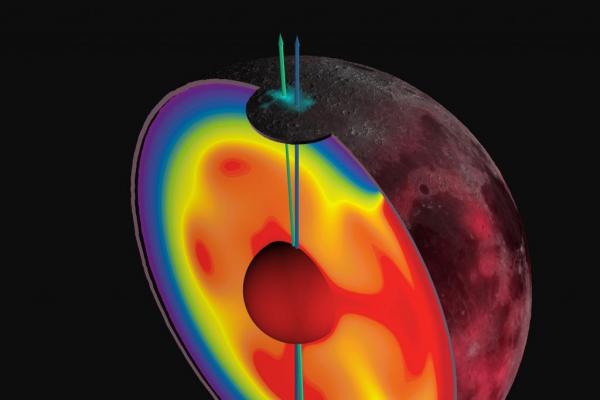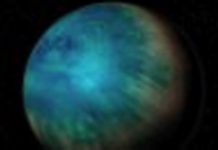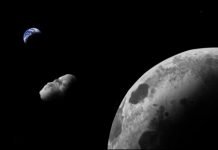DALLAS, March 23 (UPI) — Planetary scientist Matt Siegler noticed something odd while analyzing the distribution of polar hydrogen on the moon. The ancient ice, thought to reside in the pits of sunless craters, was off-kilter.
When Siegler and his colleagues at Southern Methodist University in Dallas, Texas, took a closer look, they realized the hydrogen ice was equally offset on both the northern and southern lunar poles — but in opposite directions.
The pattern, researchers decided, was proof the moon’s axis had shifted a long, long time ago.
Scientists believe the six-degree shift happened some 3 billion years ago. The shift was likely gradual, taking place over the course of 1 billion years.
“This was such a surprising discovery. We tend to think that objects in the sky have always been the way we view them, but in this case the face that is so familiar to us — the Man on the Moon — changed,” Siegler, who is also a researcher at the Planetary Science Institute in Tucson, Arizona, explained in a news release.
“Billions of years ago, heating within the Moon’s interior caused the face we see to shift upward as the pole physically changed positions,” Siegler said. “It would be as if Earth’s axis relocated from Antarctica to Australia. As the pole moved, the Man on the Moon turned his nose up at the Earth.”
A planetary axis shift, or polar wander, is rare, but not that rare. Earth, Mars, Saturn’s moon Enceladus and Jupiter’s moon Europa have all experienced the phenomenon.
Researchers believe the shift was caused by an internal shift of mass. Ancient volcanoes heated a portion of the lunar surface, which melted a part of the moon’s mantle below.
“This giant blob of hot mantle was lighter than cold mantle elsewhere,” Siegler said. “This change in mass caused Procellarum — and the whole moon — to move.”
Much of the moon’s ancient polar ice was lost as once-darkened craters moved out of the shadows and sunlight bubbled the ice away. But enough remained hidden from the sun to give away the ancient shift.
Siegler and his colleagues — whose work was published in the journal Nature — expect further exploration of the moon’s hidden ice to offer new and unexpected revelations, as well as answers to long-asked questions, like where did Earth’s water come from?
“The ice may be a time capsule from the same source that supplied the original water to Earth,” Siegler said. “This is a record we don’t have on Earth. Earth has reworked itself so many times, there’s nothing that old left here. Ancient ice from the moon could provide answers to this deep mystery.”






